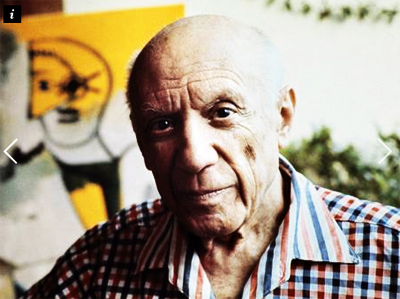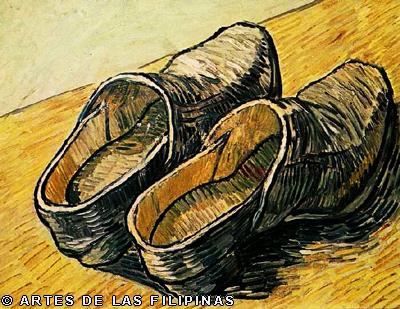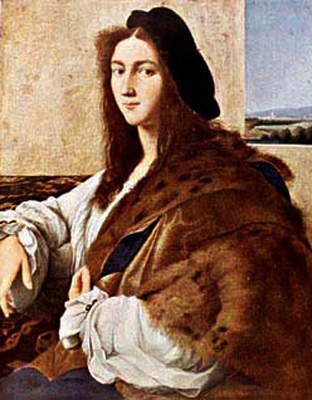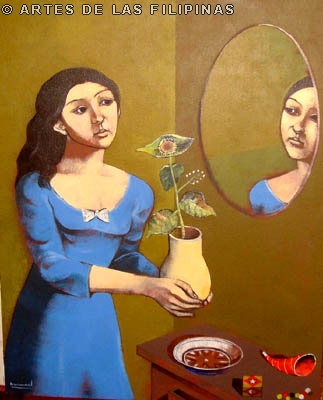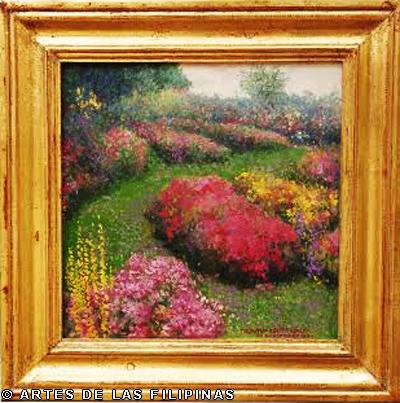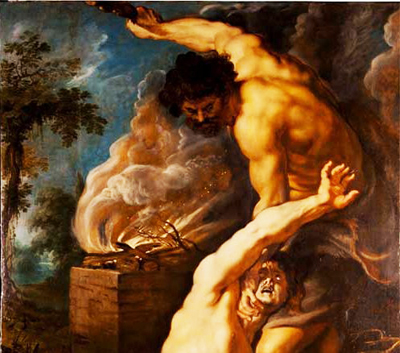
“Some artists think I’m crazy to walk a mile carrying my stuff from where my vehicle was parked, I just want to avoid people once in a while. I go every Sunday morning to this place I call “my sanctuary”.”
Photo Courtesy of the Artist
THE ART AND THOUGHT OF RAUL ARELLANO
by: Christiane de la Paz
Film actor, scriptwriter, and visual artist, Raul Arellano gives voice to the tumultuous emotions of many artists troubled by the war and the deeper feelings that remain with us all throughout life. From lovers intertwined to naked bodies of a family to a man in bondage, Arellano’s works reflect the different aspects of who he really is. His willingness to break new grounds is his most precious gift. Incorporating his own ideas and experiences has given him a work that is uniquely his own. Now based in Los Angeles, California, he is starting to make his mark with works that certainly do not pass unnoticed but the gaze and soul of those who stop to observe them. Nearly all of his works are open to multiple meanings and rich in specific messages. Each work is open to the personal reflection of the viewer who is being pulled to give a voice and meaning to each individual creation.
Tell me something about yourself.
I was born in Cagayan de Oro City on Dec. 13, 1965. The fourth child of seven siblings. My father, Cesar Arellano, was the campaign manager of Senator Raul Manglapus, around the time of my birth. He was my godfather and I was named after him. My father loved our country so much that he spent most of his time away from us. He was the third child of renowned architect Juan Arellano. My mother, Evangeline Pineda is a kind-hearted woman who grew up in Davao City. She was a ballerina and a pianist before she married my father. My grandparents from both sides were successful and hardworking people. It was Martial Law at that time and I remember living in poverty during my father’s absence in San Juan. I was only seven years old. My mother had no choice but to go back to her parents in Davao City, bringing us along, her seven children. When we got settled there, that was the first time I felt my mother happy.

Self-Portrait (2004)
Is there anything about you that many people don’t know about?
“I am a man who inherits life from the provenance of our ideas of good and evil. Fate made me see myself pouring the essence of persuasion that only I will understand. What an obscure painter I am.”
What/who pursued your interest in the fine arts?
I was trained and educated as an actor in the Philippines. This taught me how to pour my emotions fully. If not for my 1987 scholarship in the Actors Workshop Foundation, I would have ended up just painting still lifes. In 1995, I went to the United States and studied film at the School of the Art Institute of Chicago. I frequently visited the Museum of the Art Institute of Chicago as I have free access as a student. I felt recharged whenever I saw the paintings of masters that were hung on the walls. They served as food for my hungry soul. After finishing my course in film I went back to the Philippines but was disappointed so I headed back to the U.S. My first few works in the U.S .were done plein-aire at a national cemetery in California because I felt shy about working in public view. I was more at ease among the resting souls. The tragedy of the 9/11 put a strain on my overall view of the world. After that incident, I decided to listen to my inner self. In 2004, I started painting feverishly from my subconscious.
Any films you were in that have been shown?
My main films were Bayani by Raymond Red, wherein I played the role of Jose Rizal. In the film Sakay, I played Lt. Juan Dominguez. In Batang West Side by Lav Diaz I played the role of Dindo, where I won a best supporting actor award in Urian. I was mostly in theater at the University of the Philippines Guerrero Theater, Tanghalang Ateneo, and the Cultural Center of the Philippines.
Did you have any formal education in the fine arts?
I took over 60 units of Fine Arts in El Camino College in South Bay California. This is the school where I loaded myself with art history before entering the studio arts.

Raul Arellano
“Iyak, Sigaw, at Takot”
36 x 90 inches
2004
oil on canvas
Where do you get your ideas in what to paint?
I don’t plan the images that come out in my drawings and paintings. This is how it works to me. First of all I have to relax to really feel vulnerable. At this moment I will be conscious with my feelings by asking myself. How do I feel? How do I feel about a man who works hard to be able to express himself? How do I feel? I have to stimulate my subconscious mind by talking as if I am talking to another person. At this point, I may start painting in my own way but I explore and search — to connect the bridge of the conscious to the subconscious by deliberately working with the medium that switch on the subconscious projector. This method may sound crazy but it works for me well. I call this method fluidicism. Also, I leave the studio to do plein-aire once or twice a week. I choose a location which is in a primitive state, I mean not artificial or man-made. Some artists think I’m crazy to walk a mile carrying my stuff from where my vehicle was parked, I just want to avoid people once in a while. I go every Sunday morning to this place I call “my sanctuary”.
And this place that you call your sanctuary…
At Rancho Palos Verdes, there is a place called Whale Watch.

Raul Arellano
“Capobianco Gallery Incident”
62 x 40 inches
2004
oil on canvas
Let’s catch up with your works a bit. The series of paintings, you say, are the effects of the war in Iraq on you. What were your thoughts on each work?
The Capobianco Gallery Incident (2004) is inspired by a lady I saw on the news I was watching. Her name is Lori Haigh, a gallery owner who was attacked and punched in the face. As a Catholic who prayed everyday during my four years in high school, I asked myself where God is on a time like this. I put the face of Christ without reason and planning at all. Christianity has no place during this time thus the attacker of the Capobianco Gallery mocked what had happened in the Abu Ghraib prison.
Horror of Duty (2004) is about a soldier who was about to leave for duty. The naked bodies of the family signify vulnerability. The hand that grabs the father symbolizes authority. The child embraces the leg of the father, which is the strongest foundation of the human body a child can reach.

Raul Arellano
“Horror of Duty”
66 x 40 inches
2004
oil on canvas
The things you chose to paint are not at all common things.
I don’t know. To make social realism works was a relief. When I finish a work, I even surprise myself of the images I put in the canvas as they were unintentional. I get rugged effect of real stories, real images; this is what we have been prevented from seeing, and it’s the best I can do.
If you are to describe your work to someone, how would you describe the type of art that you do?
My works are expression of impressions that dwell in my subconscious. Daily, we are exposed to or bombarded by millions of stimuli. Whether we accept or reject them, the truth is they affect us. I respond by and large, based on intuitive interpretations and through any medium at hand. “My artworks are interpretation of what nature (physical world) is not but what the subconscious sees it to be. And it functions effectively around color, movement, and humanism. Not around the visualization of fairies, robots, strange costumes, or the like. I have no definite style. Some of my works are horrific and some are wholesome. Through my abilities I think my works are emotionally effective and fundamentally connected.

Raul Arellano
“How Else Should I Reach”
36 x 56 inches
2004
oil on canvas
What other works have you produced?
How Else Should I Reach (2004) symbolizes the Western invaders who conquered and influenced the world. Asians are trying hard to cope with the standards of living of the Westerners. Japan was trying to be tough and was bombed by the Americans. After the dreadful bombings, they were trained to be an industrial leader in Asia and produced what America wanted. Those 50 years after the bombings, Asia was lying on her back because she has to use all her limbs to reach the unreachable.
Then there is this work I titled, “Rendezvous of my Concern,” (2004). I was overcome by stimuli coming from all media sources, I was unsure of the truth, so I shut down all my senses and listened to my inner self.

Raul Arellano
“Family”
16 x 20 inches
1998
oil on canvas
Could you tell me about the first painting that you sold?
It was in 1998 in Illinois when I sold my first painting entitled “Family” to a woman named Svetlana Gornet of Lake Cook, Illinois. I felt good. That was my first income from my paintings. I sold it by myself for $400. This painting is about three figures (family) at the foreground of the rising sun.
Is there any particular painting that has given you satisfaction?
Yes, the “Crucifixion.” I experienced goosebumps all over my body while executing it. The “Crucifixion” signifies the image of America during the leaving of the troops for IRAQ. Crucifixion is the highest level of sacrifice of a human being. As the couple embrace, they are trying to keep the bondage of unity and love, but the souls that come out from the nailed wounds are trying to separate from their bodies. Thus the souls know the fate of separation.
Any work that you were dissatisfied?
I have had no dissatisfactions since I am working in a medium that is erasable. I could come back and re-do it if I wanted to. I have no problems with oil, conte, pastel, charcoal and wax. The only time I was dissatisfied with my work was when I was still going to school trying to keep up with the academic rules, and eventually learned the rudiments. Now I work on my own pace.
Is there anything Filipino about your art?
Of course it is very Filipino. If my subjects are European or Americana it doesn’t mean that I lost contact with my heritage. I am very Filipino at heart, soul and in language. I speak Bisaya and Tagalog. I spent my teenage years in Davao City and a third of my life in Manila. I’m definitely a hundred percent earthling. I think earthling is the best word or name to identify ourselves with.

Raul Arellano
“Crucifixion”
66 x 40 inches
2004
oil on canvas
How do you think the Filipinos will react to your works?
It depends upon what work of mine they will see. It is up to their perception. Any reactions are welcome except asking me a question like “What are you trying to communicate?” An M.A. student from UCLA asked me that question. I answered “Ask the canvas. It knows better than I do.” Critics won’t give you any help. I don’t care about the details on my paintings. I don’t even think about it. Some critics would say that my idea of fluidicism has already been done by the expressionists. I answered, “I founded fluidicism through my passion and discipline in my paintings. I didn’t get to experience their customs, ideas, and appearance their period as they saw it. The point is, fluidicism was founded in the digital world, it is another method. We are all debris of evolution. If Michelangelo Buonarroti was born in our generation, do you think he would have painted the way he paints during the Renaissance?
Why do you think critics are of no help to artists?
In cooking, the critics are the tasters but they know nothing about the cooking process and recipes of the food. When the taster says it’s delicious, everybody will buy and eat it. They say and write latently and pass information of an art form that they claim to love. It’s easy for them to falsify by praising and putting down artworks. They learned and mastered advocacy. So, what does this thing have to do with the artist? I’m not trying to swim against the current but that is the truth. There are some critics who champion and evaluate artworks without scrutiny. Just because the gallery owner wants to have a big bite from the artists, they advise the artist to do this and that. Critics are playing an important role in history as well as the business sector.

Raul Arellano
“Rendezvous of my Concern”
48 x 60 inches
2004
oil on canvas
What is the best thing that has been written or said about your works?
“Arellano’s paintings evoke and provoke a sense of emotional wonder; a penetrating look into the heart and mind of the artist and the viewer. What does the artist see and when, and why are we who we are within the context of his work. Everyone and no one, we are all within his work, we are his work, we are his wonder, and we all identify and understand with it.” — Professor Lawrence Wm. Klepper, MFA
And the worst?
A caucasian lady in her sixties had commented, “he has the guts to do it here,” while I was painting Inside 2004, when the elements of Abu Ghraib Prison emerged as the subject of my painting. I don’t know if this is the right answer to your question, but I have learned something from the word guts, that it has both a positive and a negative connotation.

Raul Arellano
“Inside”
35 x 44 inches
2004
oil on canvas
Should you decide to make a career in the Philippines, do you think you would have been successful?
Yes, I believe so…for the simple reason that if I create something, I already consider that a success. The success of an artist cannot be gauged by popularity but by doing and making it happen using the best of his capabilities. I don’t think popularity can be cited as a standard achievement in art.
How do you keep yourself updated on the art scene in the Philippines?
The last time I was in the Philippines was last May of 2005. The following day, I went to the National Museum but it was closed and was being renovated. I visited the Lopez and Ayala Museum instead. When I am here in the U.S. I try to keep updated by visiting Filipino websites.
What do you think are the advantages of pursuing a career as a visual artist in your own country than abroad?
The advantage is the subjects that I want to create. I was academically trained to copy from nature. I missed a lot of relevant subjects that I really wanted to paint like the urbanscapes and rural landscapes as well as their inhabitants. Nakakalungkot pag malayo ka pero darating rin ang panahon at muli akong magpipinta sa Pilipinas. Walang hihigit pa sa lupang tinubuan. Nasasabik na akong sumakay muli ng kalabaw sa bukid. Here in the U.S. you will be open to a lot of experimentation. I had been very particular of this.
And the disadvantages?
Imported art materials are very expensive in the Philippines.

Raul Arellano
“National Cemetery”
16 x 20 inches
1999
oil on canvas
How do you handle the business side of being an artist?
I have my own little studio at home where my clients come to commission me or buy my paintings. Then I also have two sellers, one is a Filipino and the other is American.
Does your seller distribute your work in any of the galleries in the Philippines?
We are planning to put up some works in the Philippines or have a one man show in the near future.
You’ve been abroad long enough to visit various museums, which one is your favorite?
The Metropolitan Museum in New York because of its vast collection.
Which piece of art is your favorite?
I have many favorites because I treat artworks as altars. I have so much respect for each work. However, I consider the “Breton Fishermen and Their Families” by the French painter Theodule Augustin Ribot as my favorite. In this family portrait of several generations, I realize that there is much more substance, depth or feeling in painting the common tao.
Who are your favorite artists?
I have three: Juan Luna, Fernando Amorsolo, and Ang Kiukok. Luna proved that he was once the best in the world. Amorsolo was able to stick to his genre. I view Ang Kiukok’s works as a reflection of the environment of his birth place. It seems like there are sharp indigenous weapons within the body of his artworks.
Among the three, who do you look up to?
Fernando Amorsolo because through his art form, he was able to capture the place, customs, and traditions of his time. How I wish I could be like him.

Raul Arellano
“In The Box”
36 x 36 inches
2004
oil on canvas
If you do not know how to paint, which talent would you wish to have?
I think scriptwriting in Filipino will be the first on my list. I realized that I am a type of person who wants to work alone. I used to work in the movie industry. At first that was really satisfying but in the long run it became frustrating. I don’t want to be eaten up by the wrong system. I’ll give you a short fiction why it is frustrating. “It was summer time in the Philippines, I saw an imported puppy eagerly chewing and trying to eat a soda straw. The owner of the puppy slapped the mouth of the little creature and threw away the straw. I asked the owner, “Why did you slap the puppy? He answered, “I don’t want this puppy to get sick.” I answered, “Of course your puppy will get sick even without swallowing the straw”. “Why?” he asked me with a bossy look in his face. I answered, “That puppy is very thirsty and was trying to sip the liquid from the straw”. He was disgusted and answered me angrily,” It’s good I did not throw this puppy instead.”Then, the owner left belittling his own puppy. The puppy was so smart and independent that its owner cannot accept how ignorant and insensitive he was. That is why I am so happy now that I am working by myself.
Any other talents that you have?
I also indulge myself in screenplays, poetry, and singing. I do improvisations using the guitar and piano. I can also play these instruments while reading chords or notes.

Raul at work. “I feel like an accomplished human being after I finished a work. It is always a process of finding a clever way to express how I feel.” Photo Courtesy of the Artist
What is it about being an artist that you love?
I feel like an accomplished human being after I finished a work. It is always a process of finding a clever way to express how I feel. I have persistence and I don’t give up as long as I’m in touch with my inner state. To me, it is all about showing the power of my will. My way of finding the truth is to listen within and to let it flow just as water does.
What do you wish to achieve for yourself as an artist in 10 years time?
I just want to be healthy and whistling while working in my own studio.
How would you like to be remembered as an artist?
Men are remembered because of what they do. Works of art are immortals and the artists are only secondary. I say this because it was history that made them important. This is my favorite quote from Voltaire. “(He) had a genius full of force and fecundity, of the natural and the sublime, without the least glimmer of good taste and without the least knowledge of the rules.” I just really want people to remember my paintings.


